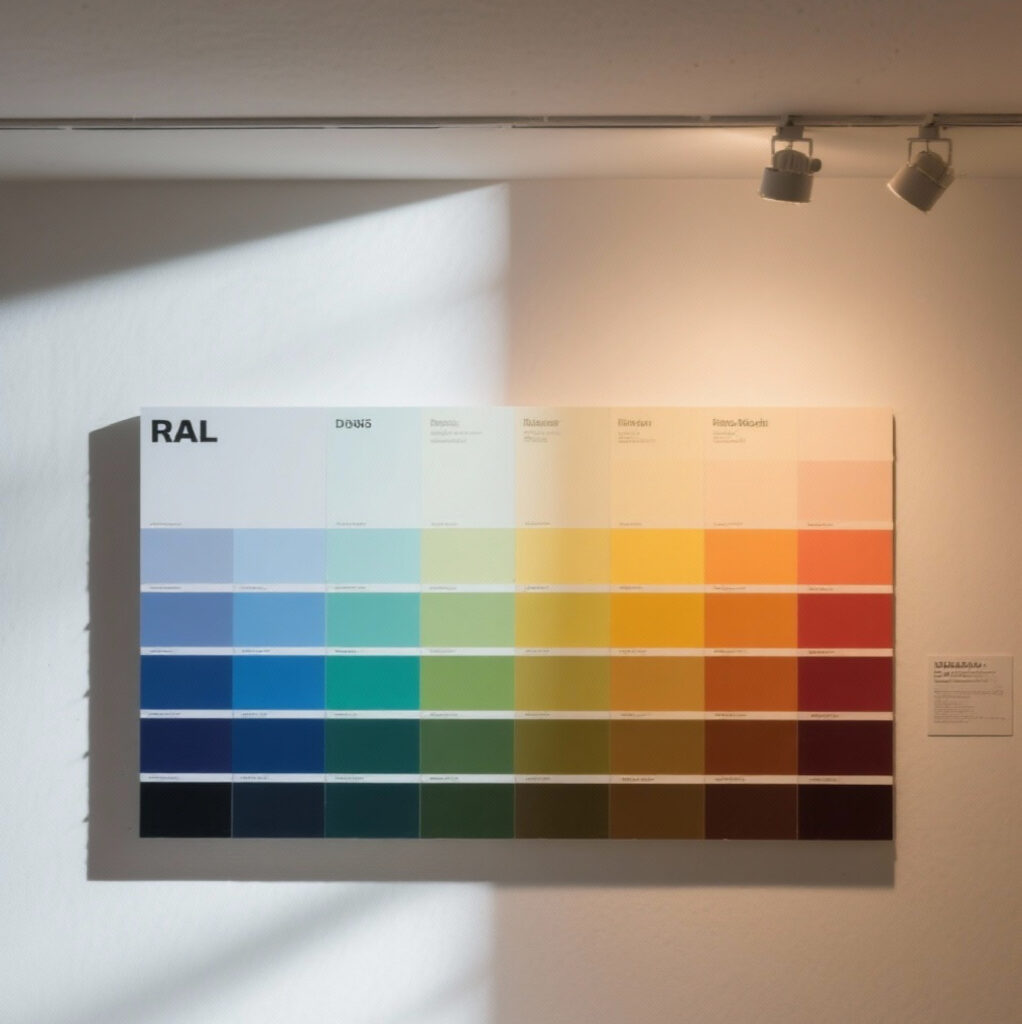Why doesn’t the same color look identical under every light source?
The answer lies in one of the most complex concepts in color science — metamerism.
Maintaining color consistency is not only an aesthetic concern but also a foundation of trust, quality, and customer satisfaction.
What is Metamerism?
Metamerism (color metamerism) refers to the phenomenon where two surfaces appear to have the same color under one light source but look different when the lighting changes.
In the powder coating and surface finishing industry, this phenomenon is critical for ensuring color consistency and customer satisfaction.
Two surfaces may have different spectral reflectance curves, yet our eyes — with their three types of photoreceptors — can perceive them as the same color under a specific light.
When the light source changes, however, the color perception shifts. This is known as illuminant metamerism.
There are also other forms, such as observer metamerism (differences between individual viewers) and geometric metamerism (differences due to viewing angles or surface structure).
How is Metamerism Addressed in Powder Coating Formulations?
Pigment Selection and Formulation
Using a spectrophotometer, pigment mixtures are analyzed to identify and eliminate combinations that carry a high metameric risk.
Metameric Pigment Combinations
Organic vs. Inorganic Pigments
- Organic pigments (e.g., azo, quinacridone) typically have narrow, sharp absorption bands.
- Inorganic pigments (e.g., TiO₂, iron oxides, ultramarine) have broader, flatter reflectance curves.
Although these can produce the same visual hue, they behave differently under varying light sources — a major cause of high metamerism risk.
Different Pigment Chemistries, Same Color
Using different pigment sets to achieve the same tone increases risk.
- Phthalocyanine Blue (PB15:1, PB15:3) → narrow absorption bands
- Ultramarine Blue (PB29) or Cobalt Blue (PB28) → broader spectral curves
While these may appear identical under one light, they can show noticeable color shifts under another.
A similar risk exists with Phthalocyanine Green (PG7) and Chromium Oxide Green (PG17) combinations.
Effect Pigments (Metallic / Pearlescent)
Aluminum, mica, and pearlescent pigments introduce geometric metamerism — color differences that depend on viewing or illumination angles.
Controlled Light Booth Testing
Color matching must be performed under standardized light sources such as D65, TL84, A, D50, and UV.
If color matching is done under a single light source, metamerism may go undetected.
| Light Source | Description |
| D65 (Daylight 6500 K) | Internationally standardized “average daylight” — represents natural outdoor light. |
| TL84 (Fluorescent 4000 K) | Common in European stores and showrooms; often reveals metameric differences most clearly. |
| A (Tungsten 2856 K) | Traditional incandescent light; simulates warm indoor environments. |
| D50 (Daylight 5000 K) | Used especially in printing, packaging, and graphic arts. |
| UV (Ultraviolet 365–400 nm) | Used to evaluate surfaces containing optical brighteners or fluorescent pigments. |
Spectral Matching Approach
Color matching should not rely solely on visual assessment but also include spectral data for higher precision.
Metallic / Effect Pigments
Surface texture and application angle directly influence metameric behavior.
Combating Metamerism — and Why It Matters
- Use spectrophotometers and multi-light-source viewing booths,
- Define metameric tolerance limits and communicate them clearly to clients,
- Maintain consistent pigment batches and formulations,
- Conduct angular tests for effect pigments,
- Apply a spectral matching strategy rather than visual matching alone.
Metamerism is an invisible yet decisive factor in the coatings world.
Preventing color differences is essential not only for aesthetics but also for maintaining perceived quality and brand reliability.
How BPC Ensures Color Consistency
At BPC Powder Coatings, color consistency is scientifically guaranteed through comprehensive testing before every formulation enters production.
- Light Box Testing
Samples are examined under D65 (daylight), TL84 (store light), and A (tungsten/incandescent) illumination.
This is the first step toward our principle of “same color under every light.”
- ΔE (Delta E) Color Difference Measurement
Color deviations are quantified using spectrophotometers equipped with LED-based D65 simulation.
The lower the ΔE value, the higher the color consistency of the powder coating.
- Spectral Matching
Colors are matched not only by tristimulus values but also by reflectance curves across the 400–700 nm spectrum.
- Metamerism Index (MI) Analysis
Spectral compatibility of pigments is analyzed, and formulations are optimized based on metamerism index results.
- Real Surface Application Tests
Powder coatings are tested not only in the lab but also on steel, aluminum, and plastic panels to ensure accuracy under real-world conditions.
🌈 Color Consistency: A BPC Quality Standard
For BPC Powder Coatings, color is not merely a visual attribute it’s a reflection of trust, technology, and quality.
Through rigorous testing and scientific control at every production stage, BPC coatings maintain the same appearance under every light source.
Our R&D laboratories combine color measurement, metamerism analysis, and pigment optimization to deliver not just color — but the confidence of color.
Our motto, “Carefully Selected Particles,” is more than a slogan; it is a culture of quality embedded in every step of production.
💡 Color, Trust, and Science — The BPC Difference
Metamerism may be invisible to the eye, but it directly influences the perceived quality of every coated surface.
At BPC Powder Coatings, we harness the power of color science to deliver reliable color performance under any light — every time.
Because we believe that: Color doesn’t just appear — it represents trust.




